Consider this lady’s beautiful serene face …
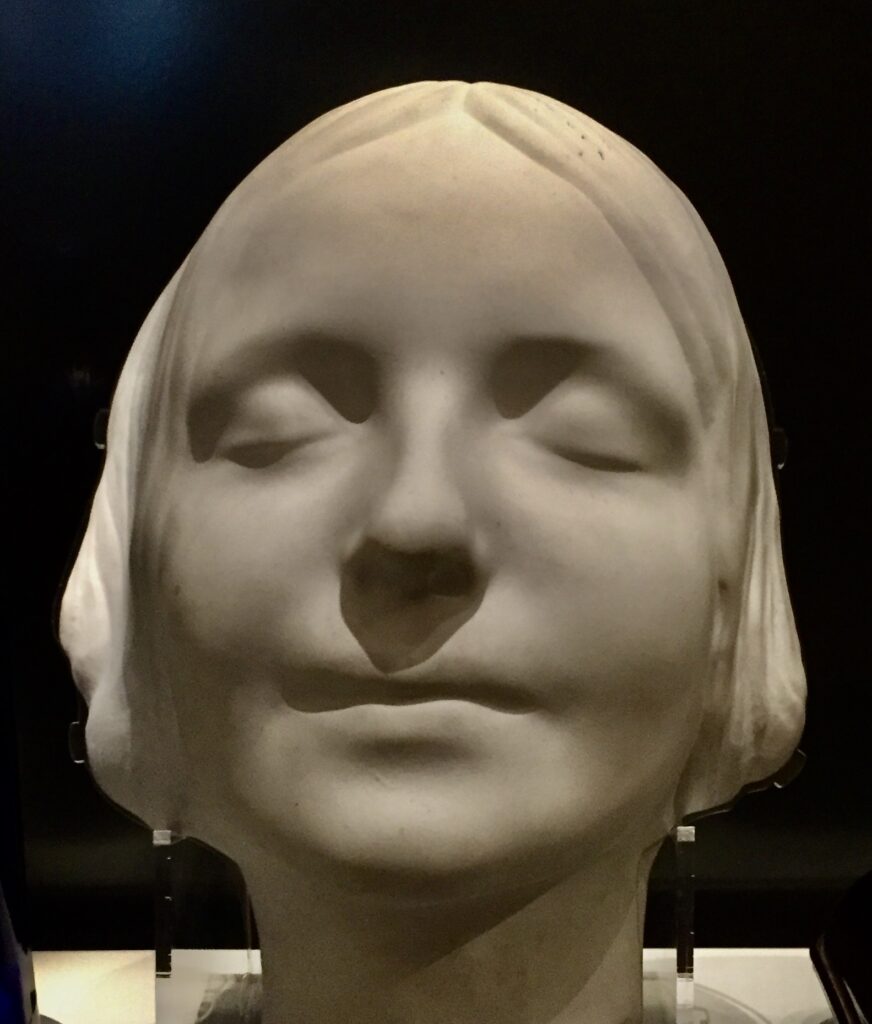
Known as L‘Inconnue de la Seine, read on further in the blog to discover her story and how she became world famous.
One has to acknowledge that, when walking through Clerkenwell, this building comes as a bit of a surprise …
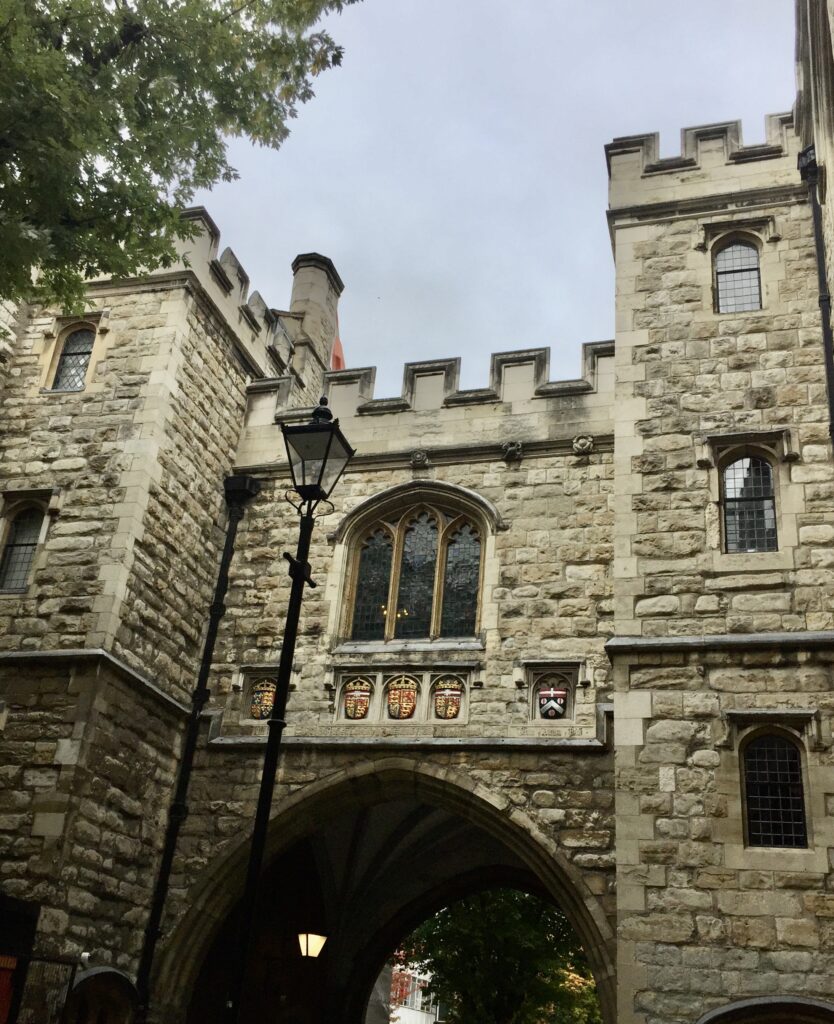

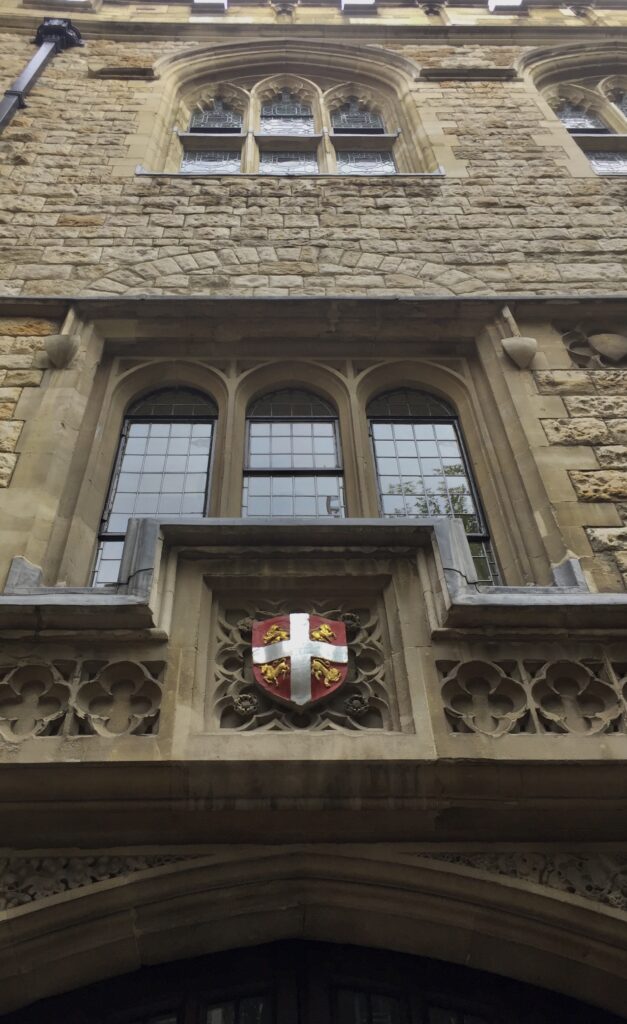
The plaque reveals its history …
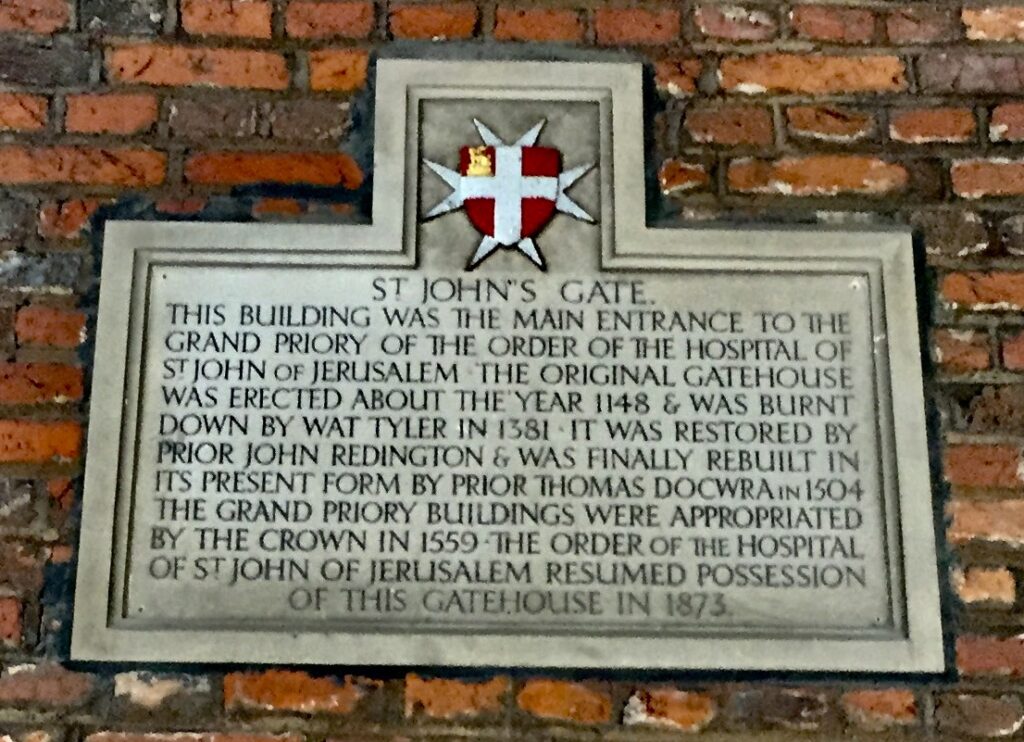
The museum that now occupies the building is a treat and entry is free. It tells the fascinating story of this famous organisation, from its origins in Jerusalem over 900 years ago to today’s modern St John Ambulance service. I only visited a small part of the museum so will be returning and aiming to take part in a guided tour.
The first exhibits you see…
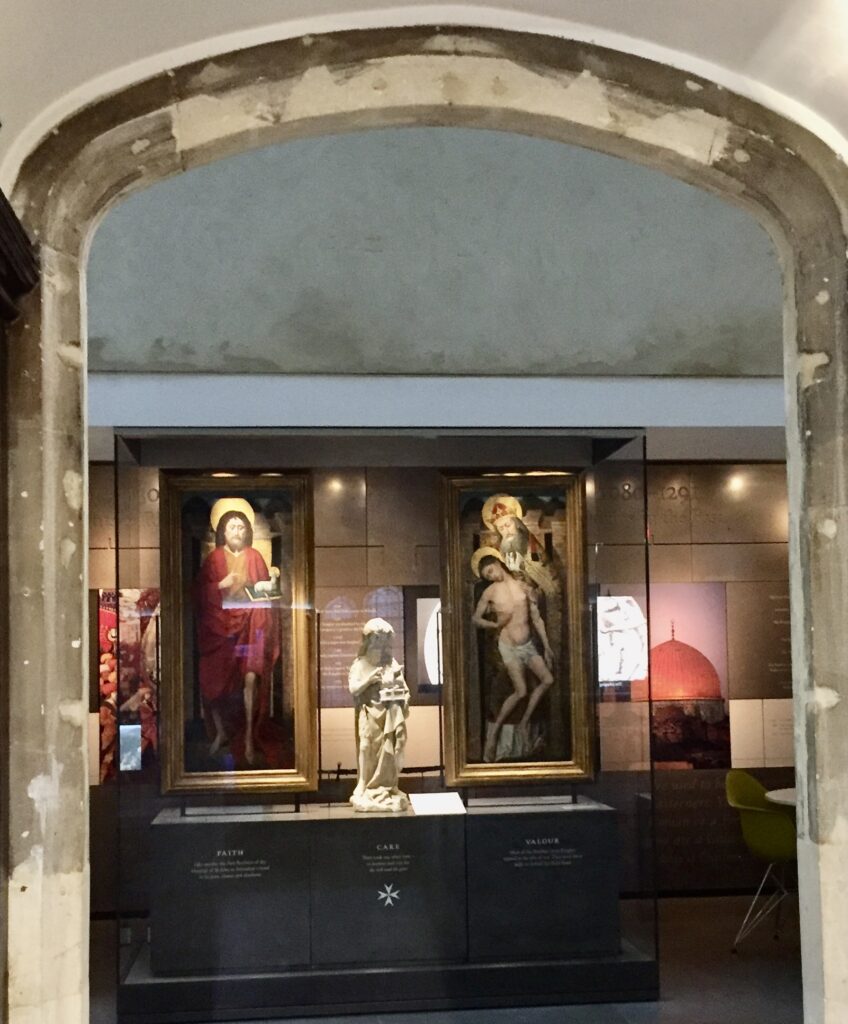
The Order’s motto today is Pro Fide, Pro Utilitate Hominum – For the Faith and in the Service of Humanity. This duty of care is just as relevant today as it was 900 years ago in Jerusalem. The principles of the Order can be summarised in three words, which are inscribed on the central podium shown in the image above.
Faith – Like monks, the first Brothers of the Hospital of St John of Jerusalem vowed to be poor, chaste and obedient …
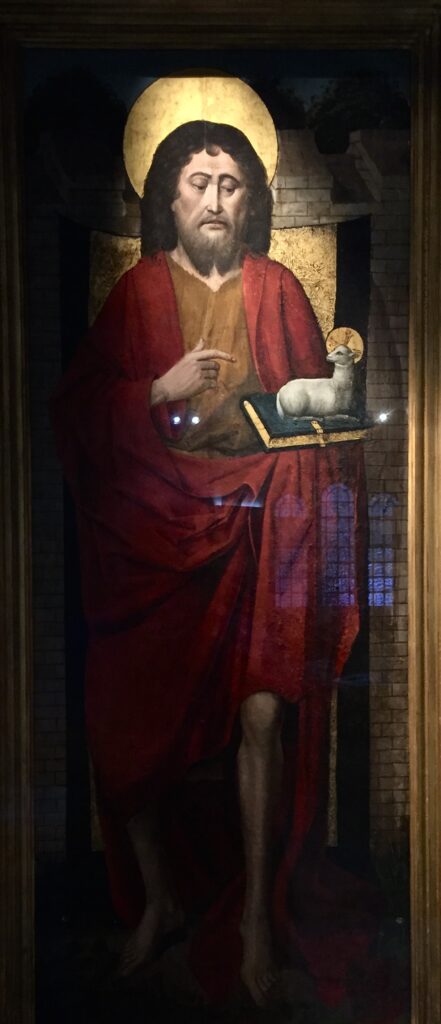
Care – They took one other vow – to honour and care for the sick and the poor …

Valour – Most of the Brothers were Knights trained in the arts of war. They used these skills to defend the Holy Land …
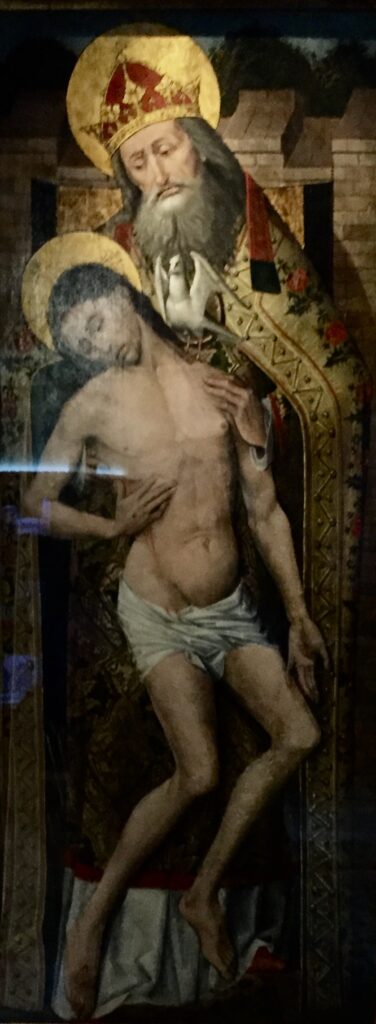
From the earliest times, the Order had female members. St Ubaldesca joined at Pisa around 1150 and after her death in 1205 she was canonised for her lifelong devotion to the care of others. This painting, from the 1600s, depicts her in a pious pose wearing the robes of the order …
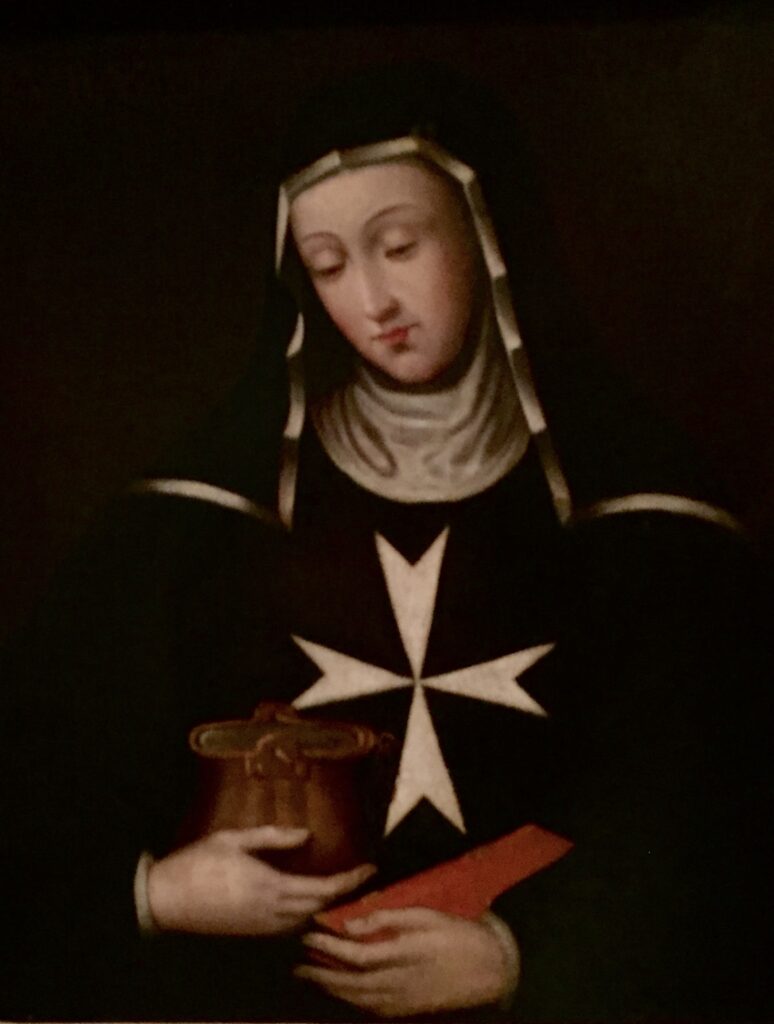
I really like this poster from the 1950s representing as it does the spread of the modern Order throughout the world, initially via the British Empire …
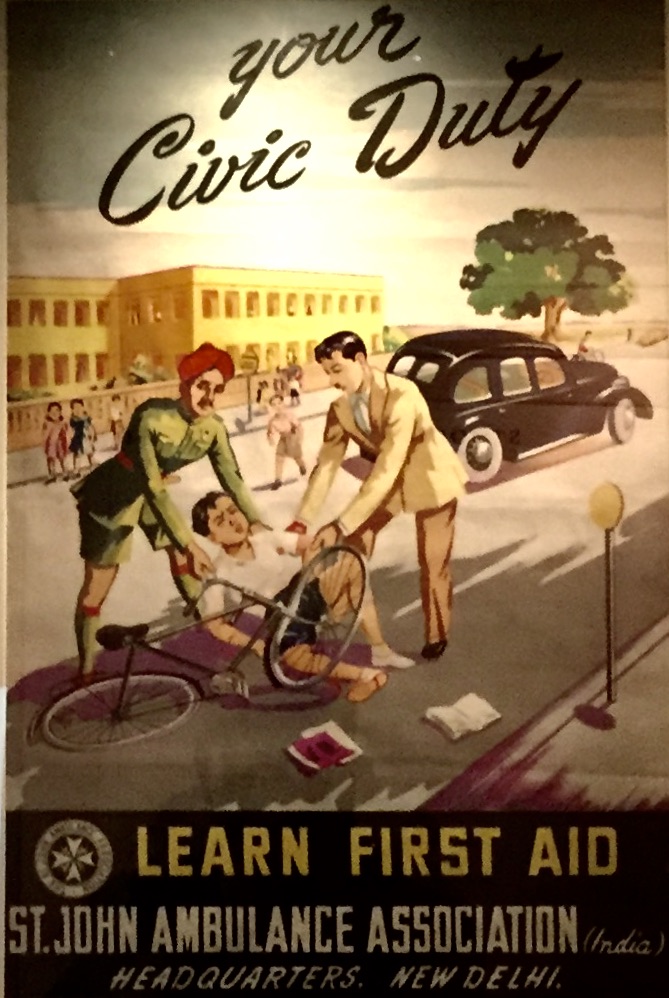
A 1955 portrait of a St John Ambulance Brigade Officer and Nurse …
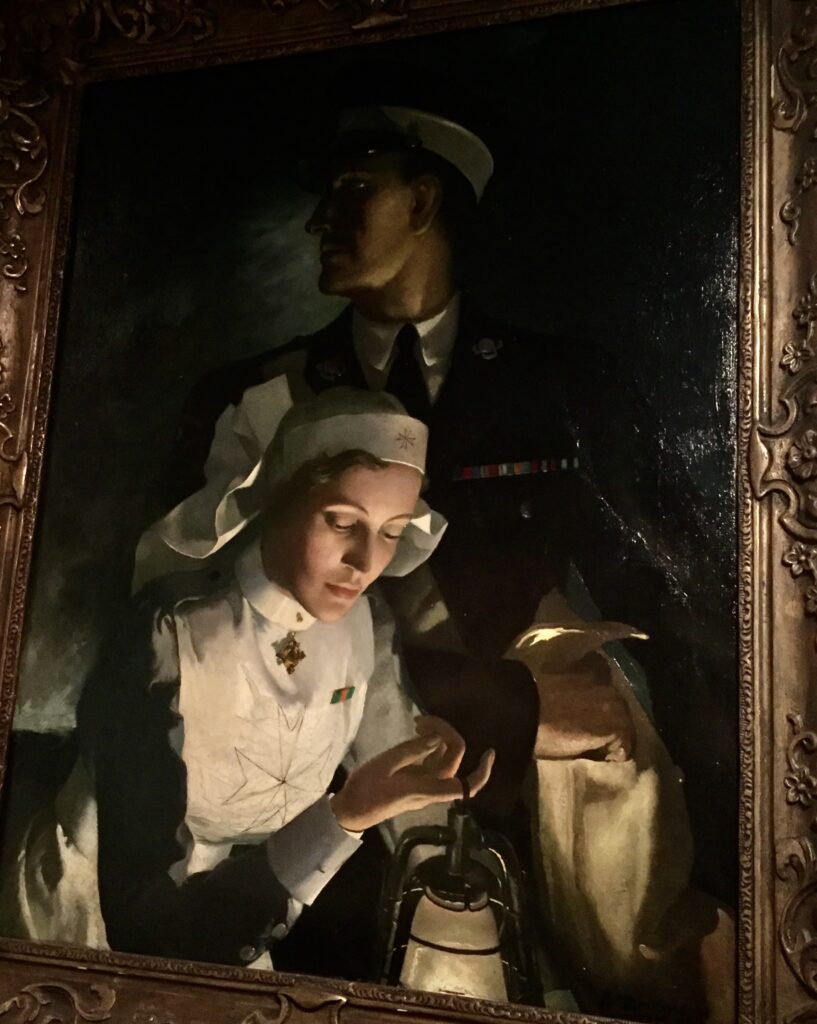
There’s definitely even more of a hint of Florence Nightingale and her lamp in this painting …
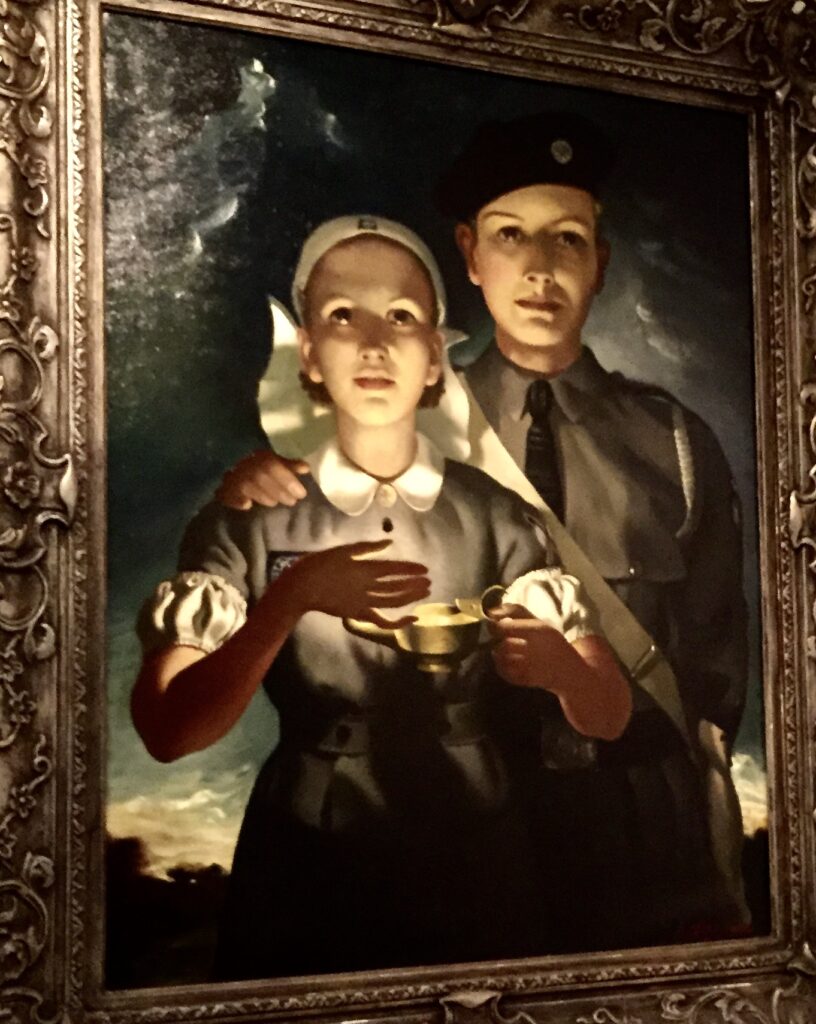
These two examples of suits of armour date from the 1500s to the 1800s but they broadly represent the kind of protection worn by the opposing forces during the Order’s long struggle with the Ottoman Empire.
The Turks favoured mail shirts …
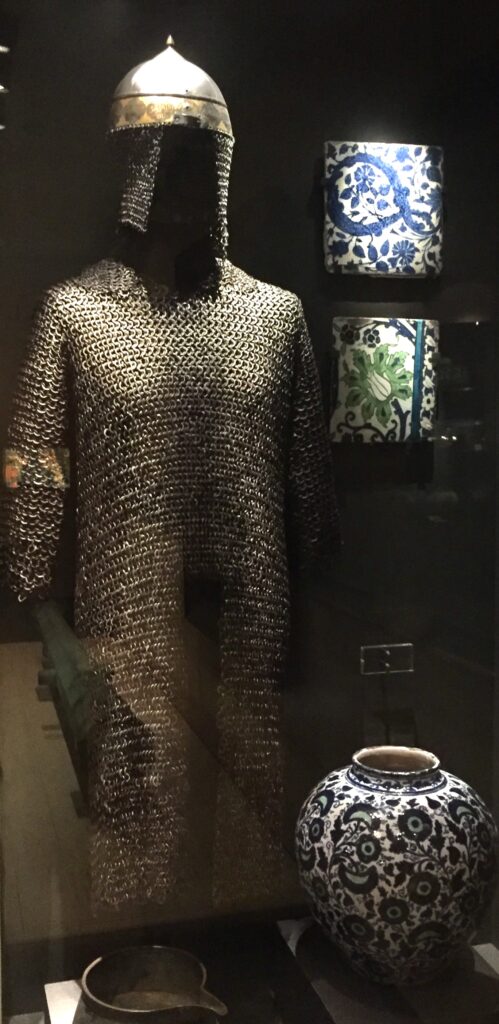
The plate armour worn by European knights offered better protection but it was heavy, inflexible and – under the Mediterranean sun – soon became uncomfortably hot …
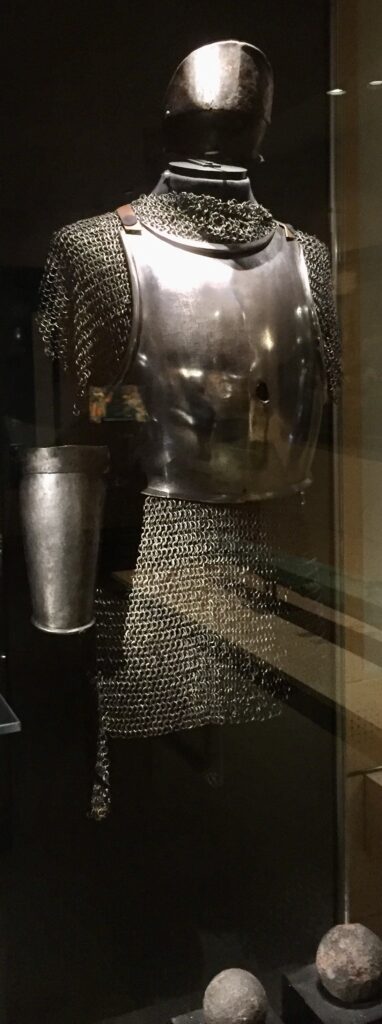
Siege relics …
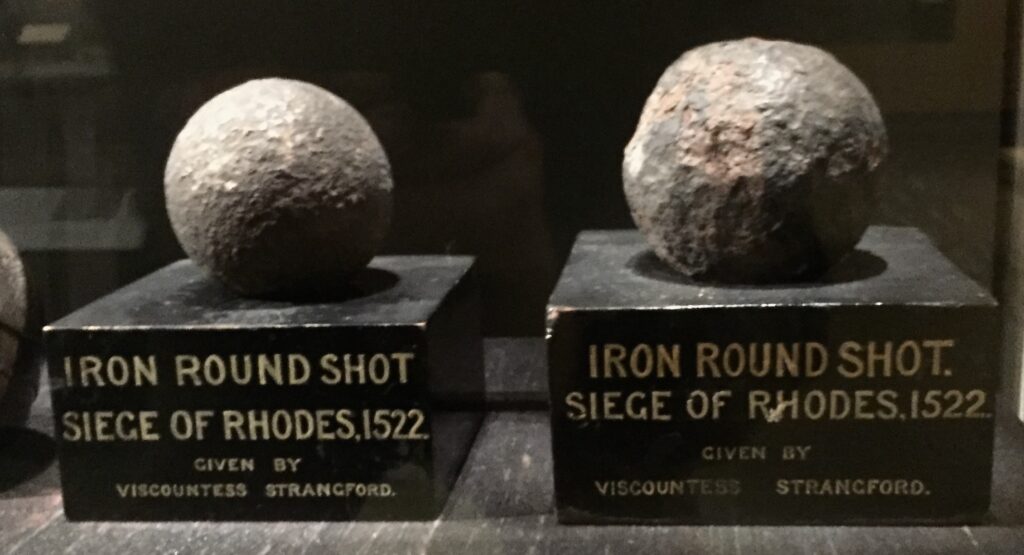
A magnificent 16th century banqueting table decoration that once belonged to the treasury of the Knights of Malta in Valletta ..
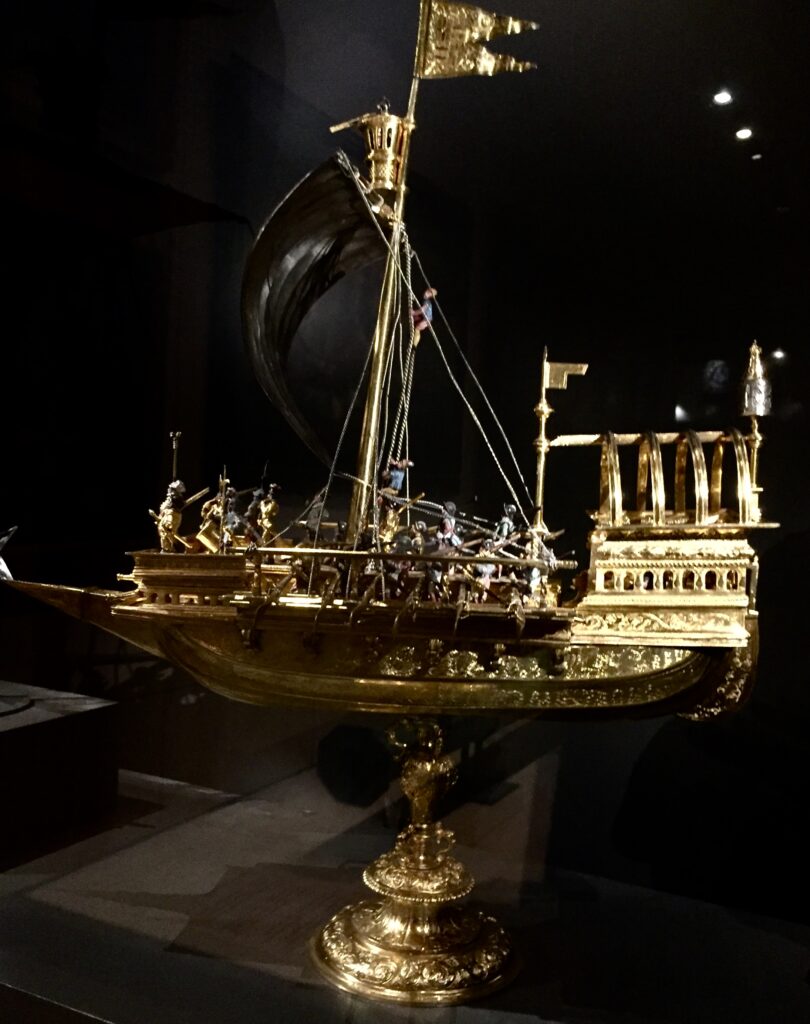
The Ashford Litter …
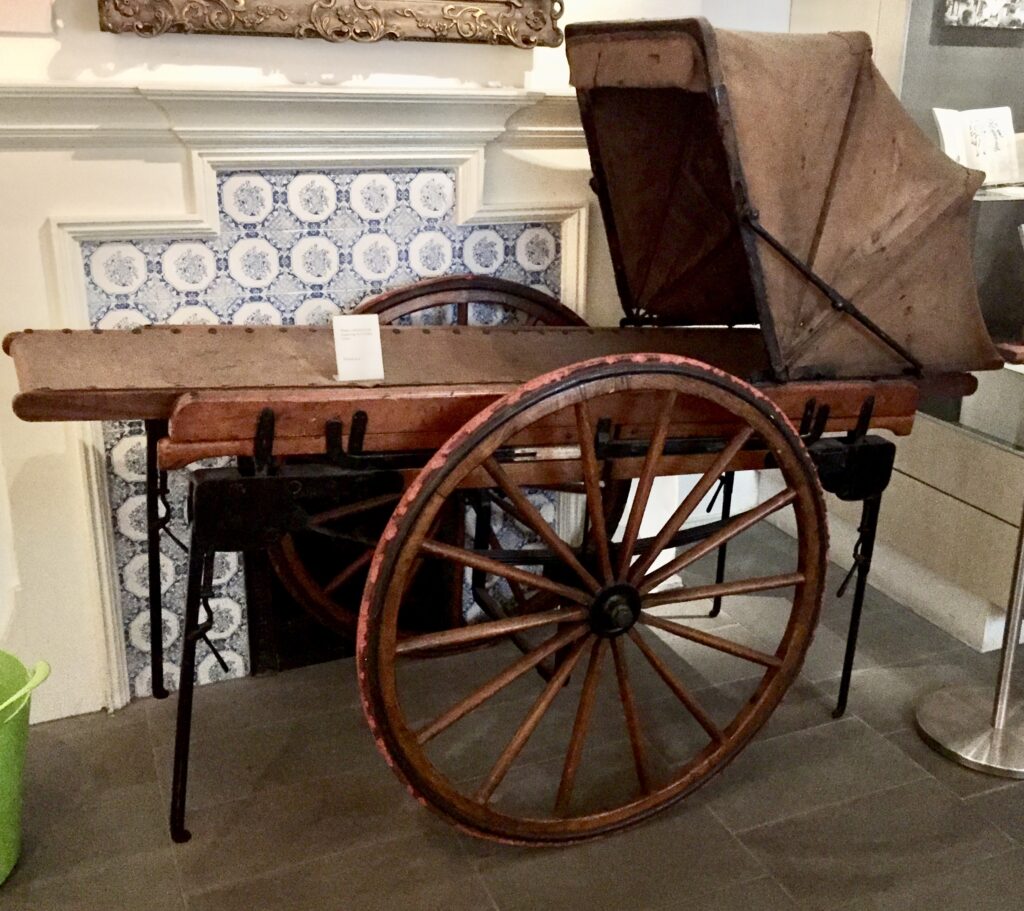
A breakthrough in the transportation of patients allowing them to be moved comfortably by a single person.
The order played a pivotal role in caring for casualties in the First World War …
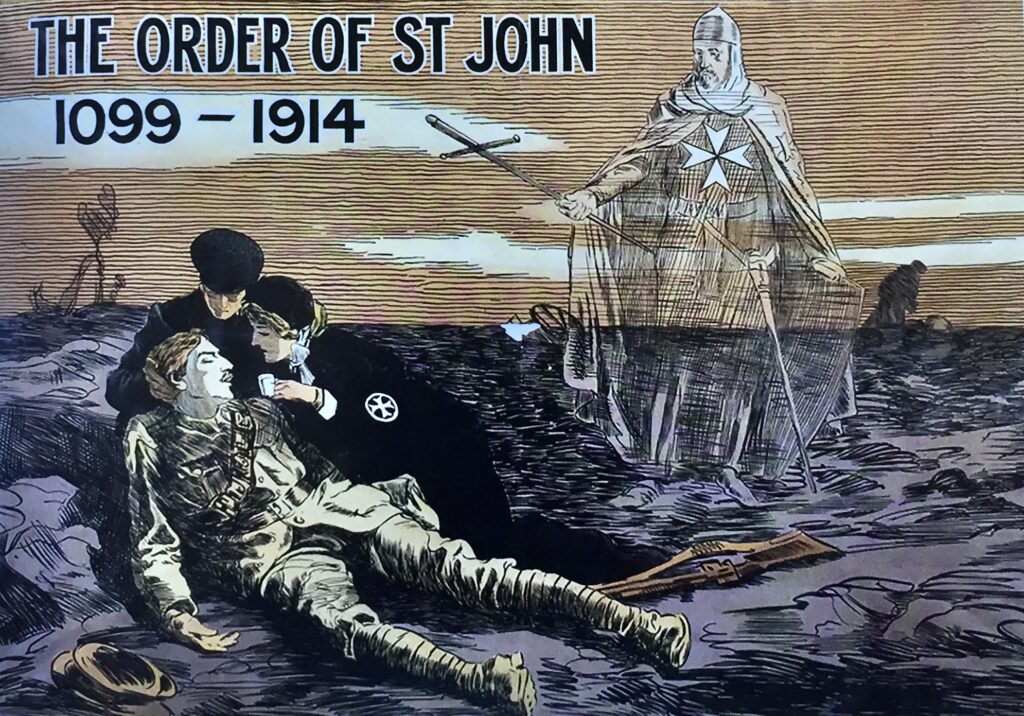
Just one of a number of display cabinets …

The triangular bandage is a staple component of first aid kits with many different uses. In the late 19th century the St John Ambulance Association started providing printed versions demonstrating how to use it …

Also in the cabinet there is an evocative painting from 1917 of a ward at the St John Ambulance Brigade Hospital, Étaples. The blanket of each bed is emblazoned with the eight-pointed cross of St John …

The insignia can be seen again on a red plaque above each bed, naming the donor who provided funds for it …
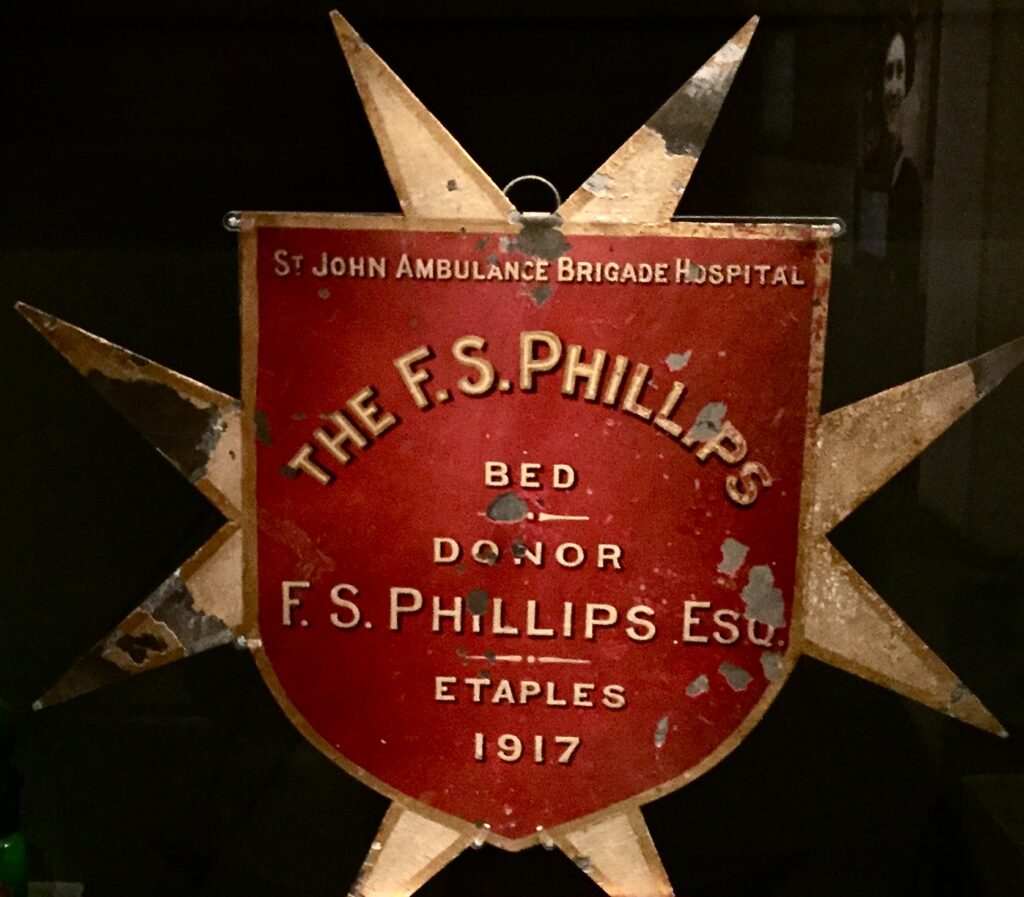
The Hospital in Étaples was the largest voluntary hospital serving the British Expeditionary Force during the First World War. It had a staff of 241, all from the St John Ambulance Brigade, and was considered by all who knew it to be the best designed and equipped military hospital in France, caring for over 35,000 patients throughout the war. On the night of the 19th May 1918, the hospital was hit by a bomb which killed five members of staff. Shortly after, on 31st May, a second bomb hit the hospital, resulting in eleven deaths and sixty casualties.
In April 1945, Ada Evelyn-Brown was one of a group of St John Ambulance nurses sent to care for newly liberated prisoners at the infamous Bergen-Belsen concentration camp in north-west Germany. Her photograph album is on display at the museum …
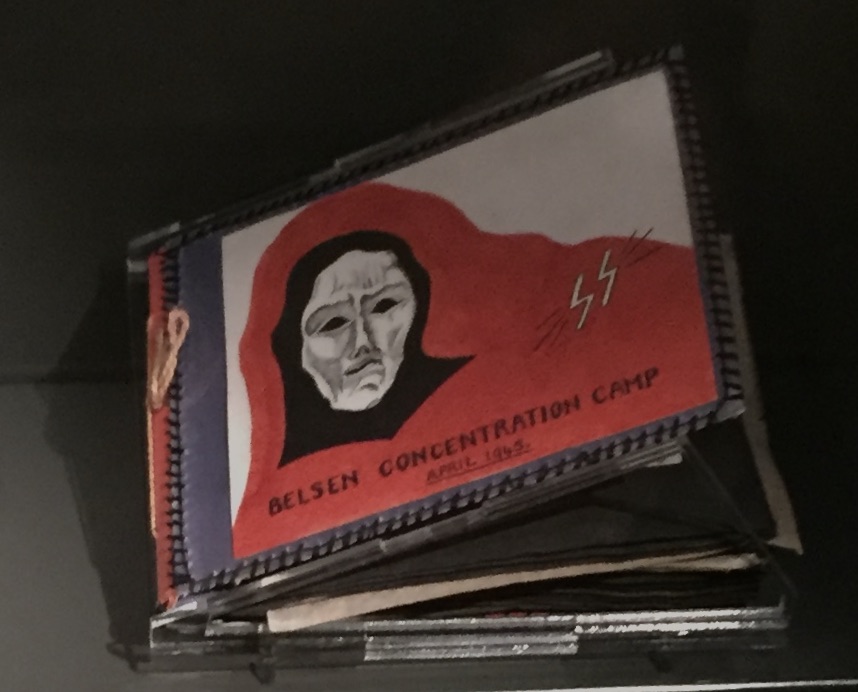
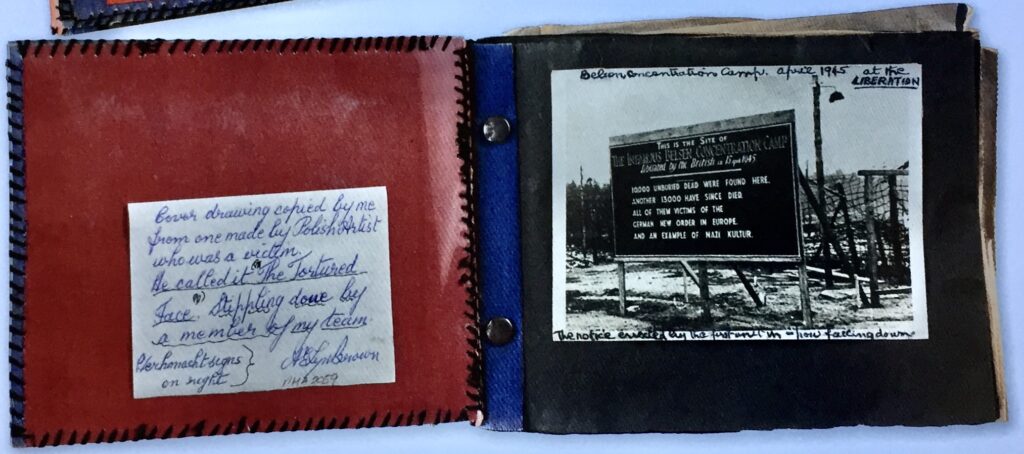
Finally, to a beautiful but tragic lady.
This is the face of a young woman found drowned in the River Seine in Paris in the late 1880s. No one could identify the body, but the pathologist reportedly became fascinated with her serene expression and commissioned a death mask. Soon multiple reproductions were on sale throughout Paris …

In the 1950s a Norwegian toymaker, Asmund Laerdal, was commissioned to produce a mannequin in which people could practise mouth-to-mouth and cardiopulmonary resuscitation (CPR). Seeking a non-threatening model, he chose L‘Inconnue and when his mannequin was mass-produced she became world-famous for a second time, known to this day as ‘Resusci Anne’.
I loved my visit to the museum and highly recommend it.
If you would like to follow me on Instagram here is the link …
